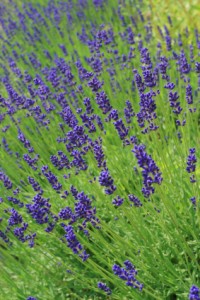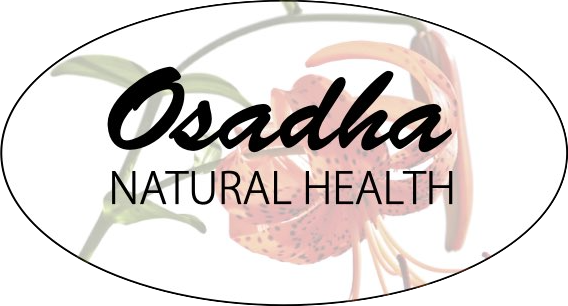 “Being an inhabitant almost in every garden, it is so well known, that it needeth no description” – Nicholas Culpeper, 17th century herbalist, botanist & physician (1).
“Being an inhabitant almost in every garden, it is so well known, that it needeth no description” – Nicholas Culpeper, 17th century herbalist, botanist & physician (1).
Lavender is ubiquitous, scenting a multitude of soaps, sachets, lotions and room sprays. Many who use these products may not be aware of lavender’s value beyond it’s popular, relaxing smell. Lavender exists as a several different species, with Lavandula angustifolia (aks. Lavandula vera or Lavandula officinalis) being the most popular for aromatherapy. Incidentally, the term “aromatherapy” was coined by a French chemist and perfumer, Rene Gattefosse (1881-1950) who burned his hands severely in a lab accident and healed them using Lavender oil (2).
Lavender’s recorded use goes back millenia to the ancient Phoenecians and Egyptians. The herb, native to areas around the Mediterranean, was popular with the ancient Greeks and the Romans as well. Lavender had a multitude of uses from cooking, to perfumery and bathing, to repelling insects, use in smoking mixtures and embalming the dead. Later it was used as a disinfectant and to ward off illness, being tossed on floors and walked upon. Lavender is thought to be an ingredient in “Four Thieves Vinegar”, a mix used to ward off the plague in the Middle Ages (3). Hildegard von Bingen, a 12th century abbess, herbalist, scientist, artist and composer — essentially a ‘“renaissance woman” before the Renaissance — wrote this regarding lavender: “Whoever cooks this lavender in wine…and drinks it when it is warm, will lessen the pain in his liver and lungs, and the stuffiness in his chest. It also makes his thinking and disposition pure.” (4). Later, Nicholas Culpeper wrote “Lavender is of a special good use for all the griefs and pains of the head and brain that proceed of a cold cause… It strengthens the stomach, freeth the liver and spleen from obstructions…helpeth them that have lost their voice, as also the tremblings and passions of the heart, and faintings and swoonings…” (1).
Indeed, contemporary herbalists use lavender for calming the mind while maintaining clarity, and for relaxing an overly tense body. There is modern research to back this up — though I prefer tradition over PubMed for herbal uses. Lavender bath oil was found to relax and reduce cortisol levels in bathing mothers and infants compared to those who bathed without the oil (5). Moreover, a small but controlled Japanese study demonstrated that lavender prolonged the attention span of subjects carrying out a long, mundane test compared with another essential oil or with no oil at all (6). Lavender helps with insomnia, depression and irritability. It’s calming but clarifying properties are useful for medidation. Energetically, Lavender opens the crown chakra and balances the upper and lower chakras (7). If you want to feel this for yourself, ground yourself for a minute in a quiet place, sniff some quality lavender or lavender essential oil, then sit with it and feel where the energy goes. If you told me to do this back when I worked in research, I would have laughed. Now I stand — or, sit — humbled.
Lavender tea will help with indigestion, as will rubbing the belly with lavender-infused oil or with essential oil diluted in vegetable oil. The flavor of lavender tea is a bit much for me unless it’s a weak brew; I prefer it blended with other herbs like chamomile, jasmine and lemon balm. Lavender sooths spasmodic coughing (eg. asthma) and it’s calming qualities will help with any associated anxiety. As a rub or as inhaled steam, Lavender is a useful and pleasant-smelling antimicrobial for upper and lower respiratory infections. It also works well as a rub for sore muscles, either as an infused oil or as essential oil. Lavender is often cited for headache relief, though I haven’t had any success using it for my own headaches. I probably wait too long before I try to do anything.
The antiseptic and pain-relieving qualities of lavender, known for centuries, has been demonstrated in modern research as well. Newly-published reseach shows that lavender essential oil was more effective than Povidone-iodine in treating episiotemy wounds after delivery (8). A small, randomized, placebo-controlled study showed that lavender essential oil may be useful for postoperative pain. The need for postoperative pain medication was reduced in patients who inhaled the essential oil compared with those who inhaled a placebo (9). Studies such as these are simply more modern versions of research published a hundred years ago in France.
I most frequently use lavender for 1st aid — my partner and I tend to bump into things! Lavender essential oil has broad and potent antimicrobial activity. It also relieves pain and stimulates skin regeneration at wound edges (7). This makes lavender a go-to remedy, and I keep a small vial of the essential oil on hand. When I had a cafe, I’d burn myself in the rush to get things done. A drop of lavender essential oil applied to the burns would quickly stop the pain, and the burns healed rapidly without any discernible infection or scarring. As an aside, lavender essential oil is one of the few that can be used undiluted, though you shouldn’t get carried away. It’s considered a safe oil, but your liver still has to deal with it.
While moving last October, I cut my arm deeply on a large piece of broken glass. I didn’t want to go to urgent care — my self-paid health insurance sucks, we were in the middle of moving, and I didn’t want to spend hours in the waiting room — so I rinsed the wound and immediatly put a few drops of lavender essential oil directly into the cut. I topped this with a layer of gauze and yarrow to act as a poultice. The lavender stung for a second or two, then it reduced the pain and helped me to relax, while the yarrow stopped the bleeding and added it’s own antibacterial properties. The next morning, I removed the yarrow poultice and reapplied a drop of lavender oil, repeating the application once or twice a day until the wound closed. Though large and deep, the cut never developed any signs of infection. There is a scar several months later, but it is much smaller than the original gash and I’m continuing to work on it with frankincence and helichrysum diluted in olive oil.
I’ve used small amounts of diluted lavender oil for tick bites on my dog. I’ve included it in topical preparations for my clients for issues ranging from ringworm to shingles. My only bad experience with lavender was when a vial of the essential oil leaked inside my backpack. Wow, was that strong!
In reference to the multitude of scented products I mentioned at the beginning: Pay attention to the ingredients in these products. If it’s real lavender, it will say so. If it has “fragrance” as an ingredient, you’re likely breathing in petrochemicals. A side-by-side comparison and your nose will quickly learn to tell the difference.
______________
1) Culpeper’s Complete Herbal and English Physician (1826) J. Gleave & Son, Deansgate.
2) Tisserand, RB. (1977) The Art of Aromatherapy: The Healing and Beautifying Properties of the Essential Oils of Flowers and Herbs. Healing Arts Press, Rochester, VT.
3) Grieve, M. (1931) A Modern Herbal. Mackays of Chatham, PLC, Chatham, Kent.
Throop, P (1998) Hildegard von Bingen’s Physica: The Complete English Translation of Her Classic Work on Health and Healing. Healing Arts Press, Rochester, VT.
5) Field, T, et al (2008) Early Human Development. 84: 399-401.
6) Shimizu, K, et al (2008) Bioscience, Biotechnology and Biochemistry. 72: 1944-7.
7) Keville, K and M Green (2009) Aromatherapy: A Complete Guide to the Healing Art. Crossing Press, Berkeley, CA.
8) Vakilian, K, et al (2011) Complementary Therapies in Clinical Practice. 17: 50-3.
9) Kim, JT, et al (2007) Obesity Surgery. 17: 920-5.
~~~
Content © Dr. Anna Marija Helt, Osadha Natural Health, LLC. Permission to republish any of the articles or videos in full or in part online or in print must be granted by the author in writing.
The articles and videos on this website for educational purposes only & have not been evaluated by the Food and Drug Administration. This information is not intended to diagnose, treat, cure, or prevent any disease or to substitute for advice from a licensed healthcare provider.
